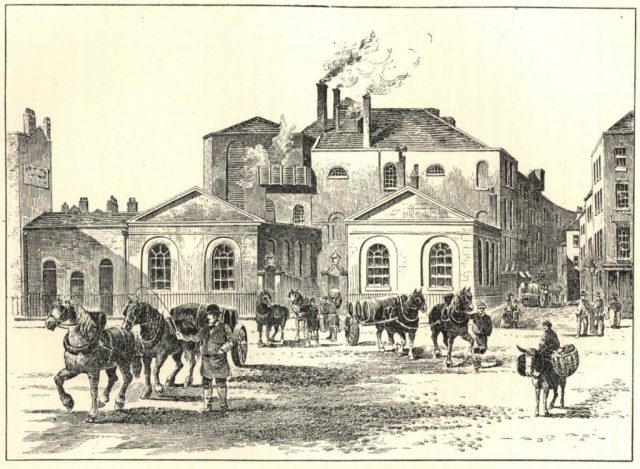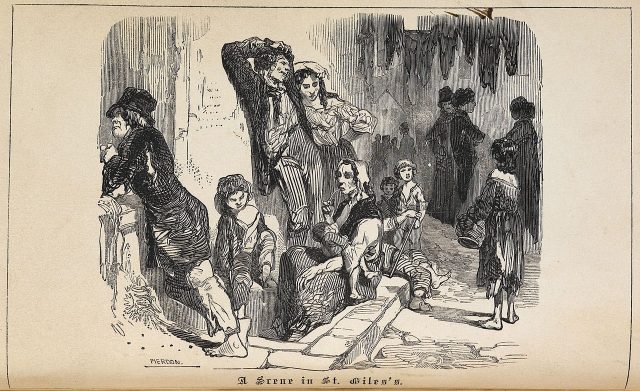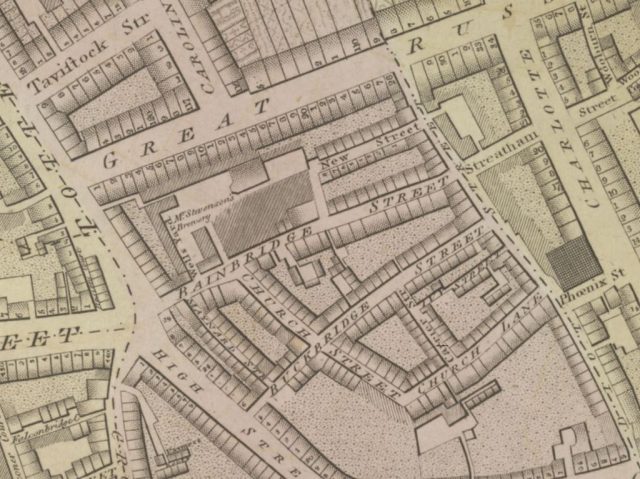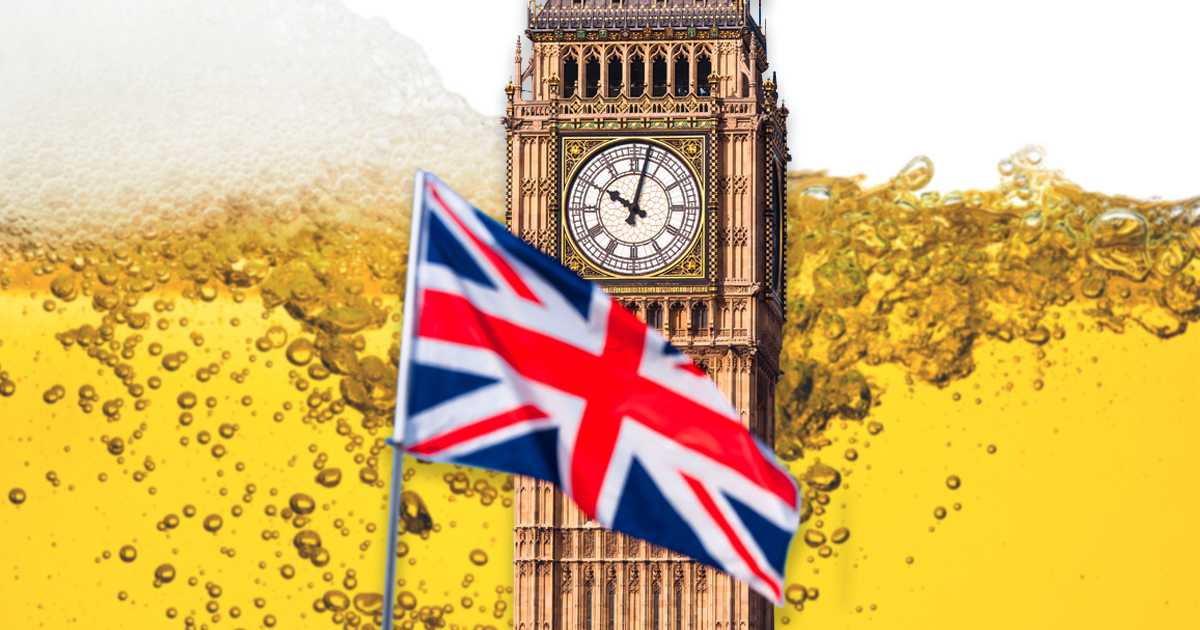In 1814 an area of London experienced a flood…with tons of beer. It sounds like something out of Barney Gumble’s wildest fantasies. But it was no joke. 8 people lost their lives. This extraordinary event saw over a hundred gallons of “porter” burst through the back wall of the Horseshoe Brewery in Tottenham Court Road, now the Dominion Theatre. Martyn Cornell, author of the Zythophile blog, describes it as “that dreadful black tsunami”. Approx 15 ft high, it wrought destruction on the community living behind the Horseshoe.
“Most, if not all, of those who died were poor Irish immigrants to London…” Cornell writes, “living in the slums around St Giles’s Church, the infamous St Giles ‘rookeries’ (later to be cleaned away by the building of New Oxford Street in 1847).” According to The Independent it was “an area of poverty and vice which inspired Hogarth’s ‘Gin Lane’”.

How on earth did the beer flood happen? Starting in the 18th century, brewers created their product on an enormous scale. Huge vats went along with their big ambitions. It became a badge of honor to construct and fill large vessels with dark porter.
The Horseshoe was owned by Sir Henry Meux, businessman and parliamentarian. He seemed to enjoy erecting epic containers of the good stuff. “In 1790 one vat was unveiled in Liquorpond Street that stood 20 feet high and 60 feet across” Cornell says in relation to another of his sites, adding: “more than 200 people sat down to a dinner inside.”

He quotes Mary Brunton, a writer who’d visited the Horsehose Brewery a couple of years earlier. “One of these casks, which I saw, measures seventy feet in diameter, and is said to have cost £10,000; the iron hoops on it weigh eighty tons; and we were told that it actually contained, when we saw it, 18,000 barrels, or £40,000 worth of porter.”
The hoops acted as substantial metal girdles, and proved crucial to the disaster. Accounts from that fateful day in October state a hoop either slipped off or snapped from a huge porter cask. History.com writes that “porter filled all but the final 4 inches of the 22-foot-high vat”. Despite these pressurized contents, the lost hoop didn’t cause concern. For George Crick, storehouse clerk, he’d seen it happen before and was merely advised to write a note so someone would come and sort it out.

This approach was fatal. It wasn’t long till the vessel blew apart. Cornell mentions American author Alan D. Eames, who in 1995 book The Secret Life of Beer “claimed that the vat burst ‘with a boom heard five miles away’”. And it triggered a deadly domino effect. History.com writes, “The blast broke off the valve of an adjoining cask that also contained thousands of barrels of beer and set off a chain reaction as the weight of the 570 tons of liquid smashed other hogsheads of porter.”
When the brewery wall collapsed into New Street, the flood claimed its first victim – Eleanor Cooper, a servant aged 14. Two houses were destroyed. With no drainage to take the porter away, the area was submerged. Horrifyingly, beer gushed down into basements that people called home. Reports say the inhabitants had to climb onto furniture to escape.
As this was a workday in the mid 19th century, all the ones who sadly lost their lives that day were were women and children. Men and boys returned home from the city to find a scene of devastation and despair. Stories circulated of depraved and thirsty onlookers drinking their fill, but these were terrible inventions. The reality was, the community banded together to search for survivors. Even so, vultures were on hand to profit from the chaos. The Independent notes, “watchmen charged people a penny or two-pence to see the ruins of the beer vats, and visitors came in their hundreds to witness the macabre spectacle.”
Related Wacko Article: The Ancient Egyptian Obsession with Beer
Worst of all, no-one was held accountable for the disaster. A court ruled the beer flood was an Act of God. Meux and his company were even given an excise tax waiver on the lost product. The winners, such as they were, had been shown kindness while victims went uncompensated.
Yet there was a strange forerunner of what was to come years before, concerning the demise of John Stephenson Jr, son of a former owner. “Around 10am on the morning of Thursday, November 13, 1794,” Cornell says, “one of the brewery workers spotted a hat swimming on top of the beer in one of the coolers. It was Stephenson’s. Just a short time before he had been in the brewery ‘accompting (or ‘accounting’) house’. Unnoticed, he had gone up to where the coolers were, fallen in and drowned.”
